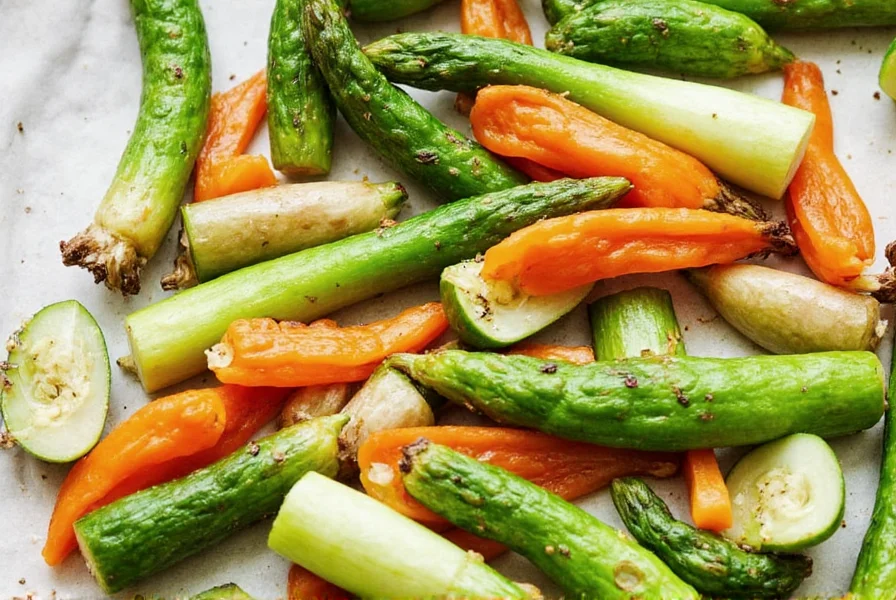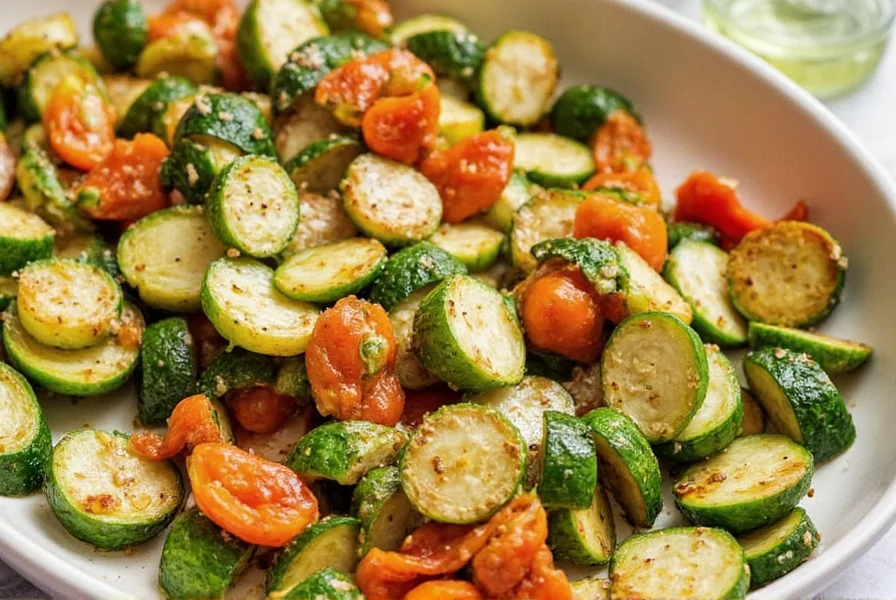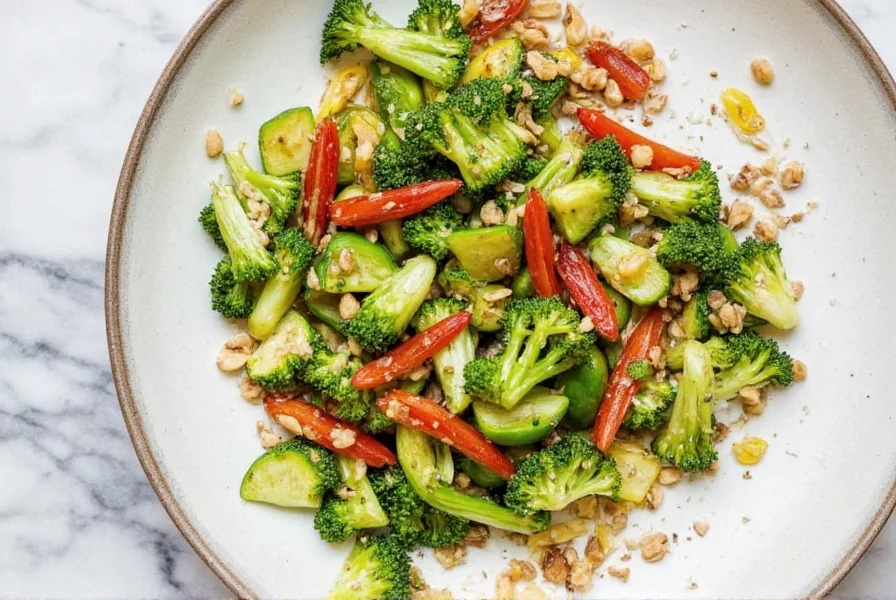Seasoning vegetables properly can transform bland produce into culinary delights. Whether you're a beginner cook or looking to refine your kitchen skills, understanding the science behind vegetable seasoning makes all the difference. This guide provides practical, tested techniques that work across various cooking methods and vegetable types.
Understanding Vegetable Types and Their Seasoning Needs
Not all vegetables respond to seasoning in the same way. Grouping vegetables by their structural properties helps determine the best seasoning approach:
| Vegetable Type | Examples | Seasoning Approach |
|---|---|---|
| Dense Root Vegetables | Carrots, potatoes, beets | Season early with salt to draw out moisture; needs longer penetration time |
| Crisp Vegetables | Broccoli, cauliflower, asparagus | Medium seasoning time; benefits from acid finish |
| Delicate Greens | Spinach, arugula, lettuce | Season just before serving; minimal salt needed |
| Sweet Vegetables | Corn, bell peppers, tomatoes | Complements both sweet and savory seasonings |
Essential Seasoning Ingredients and When to Use Them
Creating balanced vegetable dishes requires understanding how different seasoning components interact. The timing of when you add each element significantly impacts the final flavor profile.
Salt serves multiple purposes beyond flavor enhancement. When added early to dense vegetables like potatoes or carrots, it draws out moisture, creating crispier roasted results. For delicate greens, add salt just before serving to prevent wilting. Sea salt or kosher salt provides better texture control than fine table salt for vegetable seasoning.
Fats are crucial carriers for flavor. Olive oil remains the most versatile option for healthy vegetable seasoning ideas, but consider alternatives like avocado oil for high-heat cooking or toasted sesame oil for Asian-inspired dishes. The fat helps seasonings adhere to vegetable surfaces and carries fat-soluble flavor compounds.
Acids brighten finished dishes. A splash of lemon juice, vinegar, or citrus zest added at the end balances richness and enhances other flavors. This technique works particularly well for simple vegetable seasoning combinations featuring roasted root vegetables.

Timing Considerations for Perfectly Seasoned Vegetables
The sequence in which you apply seasonings dramatically affects the final dish. Understanding when to add salt to vegetables versus other elements separates adequate from exceptional results.
For roasting: Toss vegetables with oil and salt 15-20 minutes before cooking. This draws out excess moisture, creating crispier exteriors. Add dried herbs at this stage, but reserve fresh herbs until the end. This approach works exceptionally well for best herbs for roasted vegetables like rosemary, thyme, and oregano.
For sautéing: Add salt midway through cooking to prevent premature moisture release. Introduce garlic and shallots toward the end to prevent burning. Finish with a splash of acid to brighten flavors—a technique essential for healthy vegetable seasoning ideas that maximize nutritional value without sacrificing taste.
For raw preparations: Season salads and vegetable crudités just before serving. Dressing too early causes delicate greens to wilt and lose texture. Consider making your dressing first, then tossing vegetables immediately before serving for optimal results.
Cooking Method-Specific Seasoning Approaches
Different cooking techniques require tailored seasoning strategies. Understanding these variations helps you master how to season vegetables without oil when needed, or optimize flavor when using fats.
Roasting: Start with a base of olive oil, salt, and pepper. Add dried herbs at the beginning but fresh herbs in the last 5-10 minutes. For caramelization, add a small amount of maple syrup or honey in the final stages. Root vegetables particularly benefit from this method of vegetable seasoning.
Steaming: Season after cooking since steam doesn't carry flavors well. Toss with a light vinaigrette, herb-infused oil, or citrus juice. This approach preserves nutrients while adding flavor—ideal for healthy vegetable seasoning ideas focused on nutrition.
Grilling: Brush with oil first, then season. Create a flavor barrier by placing vegetables in a marinade for 15-30 minutes before grilling. Finish with flaky salt and fresh herbs. This technique works exceptionally well for how to season vegetables without oil alternatives like balsamic reduction.
Flavor Pairing Guide for Common Vegetables
Certain seasonings naturally complement specific vegetables. These pairings create harmonious flavors that enhance rather than overpower the natural taste of the produce.
- Asparagus: Lemon zest, garlic, parmesan, tarragon
- Broccoli: Red pepper flakes, lemon, garlic, toasted almonds
- Carrots: Cumin, coriander, honey, thyme, orange zest
- Green Beans: Almonds, shallots, lemon, dill
- Sweet Potatoes: Cinnamon, smoked paprika, chipotle, maple
- Zucchini: Basil, mint, feta, oregano, lemon
These simple vegetable seasoning combinations work across various cooking methods. For beginners, start with one or two complementary flavors before experimenting with more complex blends.

Common Seasoning Mistakes to Avoid
Even experienced cooks sometimes make these vegetable seasoning errors that diminish results:
Over-salting at the wrong time: Adding too much salt too early draws out excessive moisture, preventing proper browning. For roasting, salt vegetables 15-20 minutes before cooking, not immediately before.
Mixing dried and fresh herbs incorrectly: Dried herbs withstand heat better and should be added early, while fresh herbs lose flavor when cooked too long. This mistake often occurs when attempting best herbs for roasted vegetables.
Using cold oil: Always bring oil to room temperature before tossing with vegetables. Cold oil doesn't coat evenly, leading to inconsistent seasoning distribution.
Seasoning only the surface: Toss vegetables thoroughly to ensure seasoning reaches all surfaces. For dense vegetables, consider a brief soak in seasoned liquid before cooking.
Simple Seasoning Formulas for Quick Reference
Memorize these basic ratios for reliable results when you need quick vegetable seasoning solutions:
- Basic Roasting Blend: 2 tbsp oil + ½ tsp salt + ¼ tsp pepper + 1 tsp dried herbs per pound of vegetables
- Light Vinaigrette: 3 parts oil + 1 part acid + ½ tsp salt + flavorings to taste
- Spice Rub: 1 tbsp oil + 1 tsp salt + ½ tsp each of two spices + ¼ tsp garlic powder per pound
These formulas provide starting points for healthy vegetable seasoning ideas that you can adjust based on personal preference and specific vegetables. Remember that how to season vegetables without oil requires substituting with vegetable broth, citrus juice, or vinegar-based marinades.
Advanced Techniques for Elevating Vegetable Dishes
Once you've mastered the basics of how to season veggies, try these professional techniques:
Layered seasoning: Apply seasonings at multiple stages—before, during, and after cooking. This creates depth of flavor that single-application methods can't match.
Infused oils: Heat oil with herbs, garlic, or spices, then strain and use for finishing. This technique delivers intense flavor without burning delicate ingredients.
Finishing salts: Sprinkle flaky sea salt or specialized finishing salts (like smoked salt or truffle salt) just before serving for texture and flavor bursts.
Umami boosters: Add small amounts of umami-rich ingredients like nutritional yeast, miso paste, or tomato paste to enhance savory notes without overpowering the vegetable's natural flavor.











 浙公网安备
33010002000092号
浙公网安备
33010002000092号 浙B2-20120091-4
浙B2-20120091-4